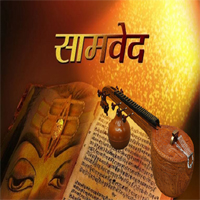Dhrupad: Unveiling the Celestial Symphony
By Vasini Shyama Charan Jha
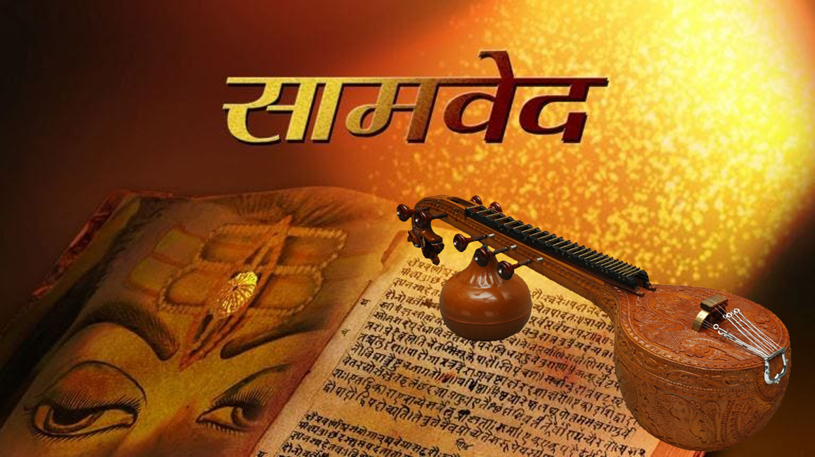
In the sacred tapestry of Indian classical music, Dhrupad stands as a timeless embodiment of the celestial symphony, resonating with the profound rhythms that underpin the very essence of existence. This ancient tradition, rooted in the celestial melodies of the Sama Veda, is a sonic manifestation of the cosmic dance of Shiva, the Adi Yogi (the primordial yogi) and the Lord of Dance.
The Birth of Dhrupad: Eternal Echoes from the Sama Veda
The genesis of Dhrupad can be traced back to the sacred chants of the Sama Veda, one of the four principal Vedas of Hinduism. These ancient hymns, believed to be revelations from the divine, were sung with meticulous precision, adhering to a system of tonal accents and rhythmic patterns that were meticulously preserved and transmitted through an unbroken lineage of scholars and practitioners.
One of the most revered mantras from the Sama Veda is the “Sadāvṛttam” (सदावृत्तम्), which translates to “ever-moving” or “eternal rhythm.” This mantra invokes the cosmic dance that permeates the universe, celebrating the rhythmic pulse that orchestrates the dance of creation and dissolution.
Sadāvṛttaṁ sadāvṛttaṁ paramaṁ viśvatomukham ।
Janmajanmāntare ṇāntare ṇāsambhūtam ॥
“The eternal rhythm, the supreme, the all-pervading,
Born and reborn in the intervals between births and deaths.“
As these celestial melodies echoed through the temples and ashrams of ancient India, they imbued the hearts and souls of devotees with a profound sense of transcendence, offering a glimpse into the cosmic dance that permeates all existence. It was from this sacred wellspring that Dhrupad emerged, a musical form that sought to capture the essence of the divine and channel it through the medium of sound.
The Tandava in Sonic Form: Embodying the Cosmic Dance
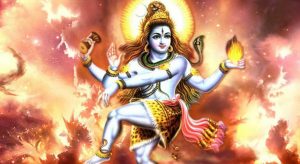 “Mirroring the cosmic dance of Shiva, Dhrupad weaves together the flow of cosmic energy, the interplay of sound and silence, and the harmonious balance of masculine and feminine essence. Its intricate rhythmic patterns, known as talas, mimic the rhythmic pulse of the universe, the cosmic heartbeat that resonates through every particle of existence.”
“Mirroring the cosmic dance of Shiva, Dhrupad weaves together the flow of cosmic energy, the interplay of sound and silence, and the harmonious balance of masculine and feminine essence. Its intricate rhythmic patterns, known as talas, mimic the rhythmic pulse of the universe, the cosmic heartbeat that resonates through every particle of existence.”
The genre’s signature element, the Alaap, is a mesmerizing exploration of a single raga, where the vocalist embarks on a melodic journey, gradually unfolding the intricate nuances and subtleties of the chosen musical mode. This meditative exploration invites the listener to surrender to the present moment, to transcend the limitations of the mind, and to attune themselves to the cosmic rhythm that pulsates within.
Echoes of the Divine: Landmark Incidents and Mantras
Throughout the rich tapestry of Dhrupad’s history, numerous landmark incidents and sacred mantras have woven themselves into the fabric of this celestial art form, imbuing it with a profound spiritual significance.
One such landmark event is the mythical tale of Tansen, the legendary musician at the court of Akbar, the Mughal emperor. It is said that Tansen’s mastery of Dhrupad was so profound that his rendition of the Raga Deepak could ignite fires, while his performance of Raga Malhar could summon rainclouds and quench the parched earth. This legend serves as a metaphor for the transformative power of Dhrupad, its ability to influence the very elements of nature and resonate with the cosmic forces that govern the universe.
Another pivotal moment in Dhrupad’s history is the composition of the “Mian Ki Malhar,” a timeless masterpiece attributed to the 16th-century musician Mian Tansen. This iconic composition, steeped in the depths of Raga Malhar, is said to have been so evocative that it could summon the rains during times of drought. The mantra-like verses of “Mian Ki Malhar” became a conduit for channeling the cosmic energies, invoking the dance of the clouds and the life-giving power of water.
Aaba na aavat, paawan ghir ghir aavat,
Jal nirjhara barkha barsaat, man mora lehraiyo re
“Now the sacred rain clouds gather,
The streams of water flow, the rain pours,
And my heart dances with delight.“
These sacred verses, etched into the collective memory of Dhrupad practitioners, serve as a reminder of the genre’s profound connection to the natural world and the rhythms that govern the cosmic dance.
The Spiritual Dimension: Awakening the Inner Dancer
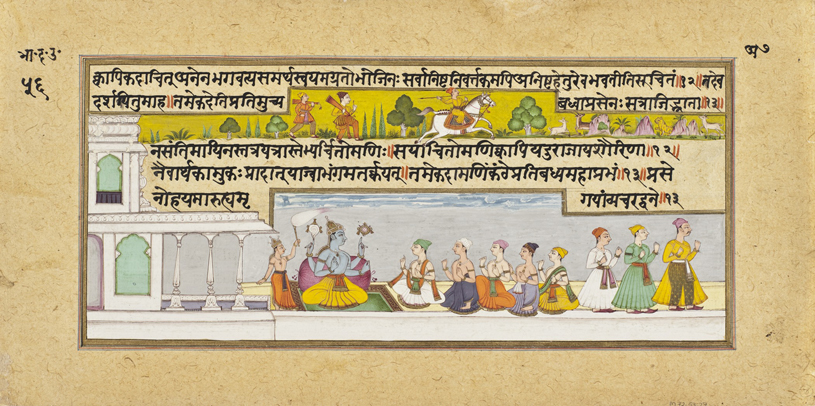
Beyond its musical and historical significance, Dhrupad carries within its melodic tapestry a profound spiritual dimension, inviting practitioners and listeners alike to awaken the cosmic dancer within. Where Shiva’s cosmic dance ignites the spark of enlightenment, Dhrupad becomes a moonlit path, gently guiding the explorer inwards towards a sanctuary of profound harmony and divine connection.
“The practice of Dhrupad is not merely a pursuit of musical mastery but a spiritual discipline, a path towards self-realization and enlightenment. Each note, each pause, and each rhythmic pattern becomes a mantra, a sonic key that unlocks the doors to the inner sanctum of consciousness.”
As the practitioner surrenders to the eternal rhythm of Dhrupad, they begin to embody the essence of the Tandava, becoming vessels for the cosmic dance to unfold within their very beings. The boundaries between the individual and the universal dissolve, and the practitioner becomes a conduit for the divine energy that permeates the universe, channeling its creative and transformative forces into a harmonious expression of their highest potential.
Echoes from the Puranas: The Dance of Creation
The ancient Puranas, the vast body of Hindu sacred literature, are replete with tales and narratives that celebrate the cosmic dance of creation. One such tale is the legend of Shiva’s Tandava, the divine dance that created and sustained the universe.
According to the Shiva Purana, the Lord Shiva performed the Tandava, the cosmic dance of creation, to the accompaniment of the celestial drummer, Nandi. The rhythmic beats of Nandi’s drum provided the rhythmic foundation for the unfolding of the cosmic dance, while Shiva’s movements brought the universe into existence.
Nandikinnarairabhinandito Vaditrairvaditrairvaditrairabhinanditah ।
Praṇanditaścārutandavairnṛtyannṛtyannṛtyati Bhuvaneṣu ॥
“Praised by the Kinnaras and accompanied by musicians,
Shiva dances, delighting in his graceful dance,
Dancing, dancing, dancing throughout the worlds.”
This profound narrative not only celebrates the divine dance but also underscores the significance of rhythm and music in the creation and sustenance of the cosmos. It is this cosmic rhythm that Dhrupad seeks to embody, inviting practitioners and listeners alike to become part of the eternal dance of creation.
Bhajans and Hymns: Reverberating with the Cosmic Rhythm
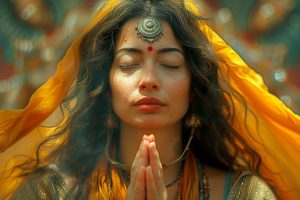 “Throughout the ages, numerous bhajans (devotional songs) and hymns have been composed to celebrate the cosmic dance and the eternal rhythm that underpins existence. These sacred compositions serve as a bridge between the mundane and the divine, allowing devotees to immerse themselves in the rhythms of the cosmos and experience a profound sense of connection with the divine.”
“Throughout the ages, numerous bhajans (devotional songs) and hymns have been composed to celebrate the cosmic dance and the eternal rhythm that underpins existence. These sacred compositions serve as a bridge between the mundane and the divine, allowing devotees to immerse themselves in the rhythms of the cosmos and experience a profound sense of connection with the divine.”
One such bhajan is the “Shiva Stuti,” a hymn of praise to Lord Shiva, composed by the revered saint-poet Tulsidas. This powerful composition not only celebrates the glory of Shiva but also invokes the cosmic dance and the rhythmic pulse that sustains the universe.
Jay Girija Pati Har Har Ganga Dhar Shoolpani |
Tava charaṇa kamala parāgata prema se bhakta bande ॥
“Hail to the Lord of Girija, the bearer of the Ganga and the trident,
With devotion, I bow to your lotus feet.
Lord of dancers, King of dancers, Master of dance, Lord of the dancing lands,
The foundation of the dance of the three worlds, the leader of the entire universe.“
Another powerful hymn that captures the essence of the cosmic dance is the “Shiva Mahimna Stotram,” composed by the great sage Pushpadanta. This sacred composition not only praises the glory of Shiva but also invokes the rhythmic pulse that orchestrates the dance of creation and dissolution.
Natarajam Natanatham Nateśam Natabhūṣaṇam ।
Naṭāntakaṁ Naṭendraṁ Naṭāṅgapraṇamāmyaham ॥
“I bow to the Lord of dancers, the Master of dance, the King of dancers,
The ornament of dancers, the destroyer of dancers, the Lord of dancers,
And the limbs of the cosmic dance.“
These bhajans and hymns, reverberating with the cosmic rhythm, remind us of the profound connection between music, dance, and the very fabric of existence. They invite us to attune ourselves to the eternal dance, to surrender to the rhythmic pulse that underpins the universe, and to experience the profound sense of unity and oneness that comes from embodying the cosmic rhythm.
Embracing the Cosmic Rhythm: A Path to Enlightenment
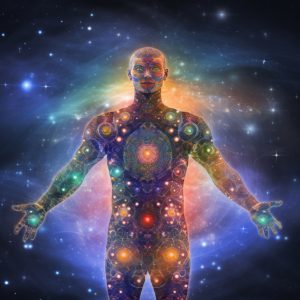 In the grand symphony of existence, Dhrupad stands as a living testament to the eternal dance of Shiva, a bridge between the mundane and the sacred, the finite and the infinite. Its melodies resonate with the cosmic vibrations that underpin the very fabric of reality, inviting us to attune ourselves to the rhythms that orchestrate the dance of creation and dissolution.
In the grand symphony of existence, Dhrupad stands as a living testament to the eternal dance of Shiva, a bridge between the mundane and the sacred, the finite and the infinite. Its melodies resonate with the cosmic vibrations that underpin the very fabric of reality, inviting us to attune ourselves to the rhythms that orchestrate the dance of creation and dissolution.
As we immerse ourselves in the mesmerizing tapestry of Dhrupad, we are not mere spectators but active participants in the cosmic choreography, each note, each breath, and each movement contributing to the unfolding drama of the universe. We become co-creators in the grand symphony of existence, our voices echoing the primordial vibrations that set the cosmos in motion.
Through the practice of Dhrupad, we transcend the limitations of our perceived reality and embrace the boundless tapestry of existence itself. We awaken to the truth that we are not separate from the dance but integral to its eternal rhythm, each heartbeat a brushstroke on the canvas of the divine.
As we surrender to this cosmic dance, we ignite a transformative spark within ourselves, radiating outward and igniting the world around us with the essence of the sacred. We become beacons of light, embodiments of the divine energy that permeates all existence, guiding others towards the realization of their own cosmic potential.
In the end, Dhrupad is not merely a musical tradition but a sacred pathway, a melodic offering to the cosmic dance that sustains the universe. It is an invitation to embrace the eternal rhythm, to surrender to the cosmic choreography, and to awaken to the profound truth that lies at the heart of existence — a truth that transcends the boundaries of human understanding and invites us to become one with the infinite tapestry of being itself.
About the Author
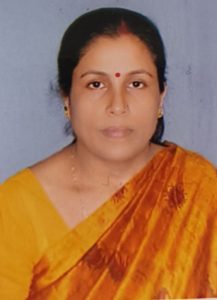 Vasini’s voice carries the vibrant spirit of Mithila’s folk music, echoing through decades of dedication. For decades, She has upheld this vibrant cultural legacy, weaving tales through traditional melodies as well as classical music. Her renditions resonate deeply, earning her recognition on AIR and Doordarshan.
Vasini’s voice carries the vibrant spirit of Mithila’s folk music, echoing through decades of dedication. For decades, She has upheld this vibrant cultural legacy, weaving tales through traditional melodies as well as classical music. Her renditions resonate deeply, earning her recognition on AIR and Doordarshan.
As an empanelled artist and a passionate teacher, She shares the magic of folk music and classical music on prestigious platforms and inspires aspiring artists, ensuring this heritage continues to soar. Her intention is to inspire generations as an artist and mentor to share the richness of Indian culture.

